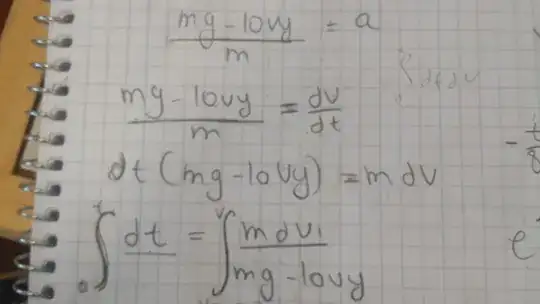I'm solving a physics question, and i just encountered some question i had no idea how to start, i just got the right answer and inside it it has something in math i never thought possible,
I know that the integral of $a$ (acceleration) by $t$ (time) will give me $v$ (velocity), I also know that the integral of $v$ by $t$ will give me $r$ or $x$ (the movement vector). I know that the derivative of $x$ will give me $v$, and the derivative of $v$ will give me $a$.
I just saw these few lines:

I somehow understand that you can replace $a$ with dv/dt because it's basically the same, but i have no idea how you can multiply the dt in the left sector of the equation, what does it mean?
I always thought that dx is basically saying 'Derivative by x' i never thought it's something "real" you can actually multiply and use basic math with...
Hope you could give me some idea about it, thanks!
In other answer i found this as the answer to "What does $dx$ mean?":
$dx$ does not mean anything. It's just a syntactical device to tell you the variable to differentiate with respect to or the integration variable.
This is exactly why i'm asking, because how can you multiply $dx$ in another thing if it's only a syntactical device?